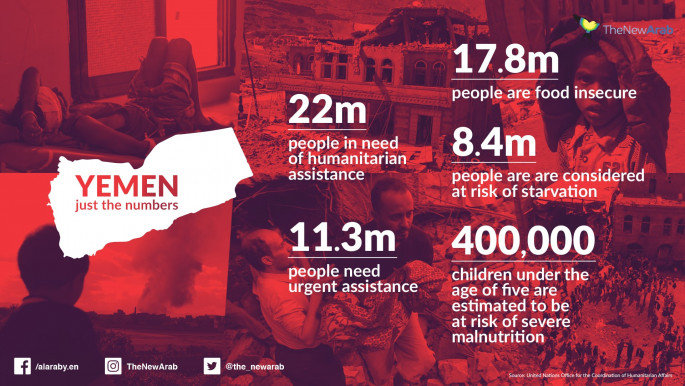Will the Saudi-brokered deal stop UAE's meddling in Yemen's south?
On Thursday, Saudi media released some details of the agreement which covered contentious political and military issues, including a formation of a new government and reshuffling the military and security units in the southern provinces.
The present government, whose officials are based in Riyadh or other southern provinces, will also return to Aden.
A source pointed out that President Abedrabbo Mansour Hadi will form a government of 24 technocrats divided fifty-fifty between the south and north. According to the agreement, “the coalition led by Saudi Arabia will oversee a joint committee to follow up the implementation of the agreement.”
The deal marks a tipping point for Yemen’s south after two years of sporadic clashes, breakdown of public services and power struggle between the southern separatists and the internationally recognised government.
The agreement, if implemented, will return the situation in the south to normalcy and stop further armed confrontations between the two sides. However, the south is still in shambles, and how this agreement will yield fruit remains to be seen.
Stopping the Emirati meddling in the south
In August, the southern Aden city turned into a battlefield between the UAE-backed southern separatists and the Saudi-backed Yemeni government forces.
Read more: Yemen in Focus: Saudi-Emirati allies reunite after deadly Aden fallout
Eventually, the separatists took over Aden while the government forces fled or surrendered. Without the Emirati colossal support, the separatists would not be able to overpower the government forces. At the time, it was viewed as a fight between the Emirati forces and the Yemeni government.
The Yemeni government slammed UAE for supporting the secessionist militias in the south and its role in obstructing the operation of government officials. However, the new agreement between the two sides - STC and the government - will incapacitate the Emirates-backed militias.
The STC itself had ambitious goals for the south, which is believed should be governed by southerners, as well as a termination of the unity between Yemen’s northern and southern region.
Since its establishment in 2017, the STC has sought the return of the former southern state that had later united with Yemen’s north in 1990 to form the current state. However, this pact seems to emphasise the unity of Yemen and contradicts the direction of the Emirati agenda in Yemen.
The excessive interference of the UAE in Yemen has tarnished its image.
Lately the Emirates withdrew its forces from Aden, in a step that has allowed the conflicting parties to reach an agreement in tht south.
The Yemeni government currently has no presence in Aden, a southern city that has been known as the temporary capital of Yemen since 2015, when the government was forced to flee Houthi rebels in Sanaa. 
However, Aden has been under the reign of the UAE-backed separatists since August, and with the rigorous implementation of this agreement, the Emirates will find itself less able to impede the operations of the coming government.
Yemeni officials on Thursday said 15 Saudi military transport aircraft landed in the southern port city of Aden. According to the sources, additional Saudi troops arrived by land in two other key Yemeni provinces, Shabwa and Hadramawt.
Last week, reports said Saudi and Sudanese forces arrived in the port city, taking control of the city airport and Al-Anad airbase in Lahj province. This came on the heels of the withdrawal of the Emirati force from Aden.
Initial reaction of STC
A STC official was quoted as saying “We signed the final draft of the agreement and are waiting for the joint signature within days.” The source also said both Hadi and al-Zubaidi are expected to attend a ceremony in Riyadh.
Salem Al-Awlaqi, a member of the STC, said he had a phone conversation with Aidrous Al-Zubaidi regarding the agreement.
"He [Zubaidi] asked me: Are the southern people happy with the agreement?," Awlaqi said.
Awlaqi replied: "As long as you are heading the STC and entrusted with the aspirations of the southern people’s aspirations, we are undoubtedly happy.”
The southern separatists see this agreement as a political win and they have the chance to share power with the government, but they will not decide the future of the south unilaterally.
One step towards peace is not the end of war
This agreement bears rays of hope for ending the stand-off in the south but it does not mean an end to the war in Yemen.
“While the signing of this deal will not see an end to the war, it is an essential step to begin addressing the political fragmentation that would undoubtedly see any future political settlement with the Houthis break down if left to fester,” said an article by Jamestown Foundation, a Washington, D.C.-based institute.
Political observers in Yemen have reacted to this agreement. Fathi Bin Lazrq, the editor-in-chief of Aden Al-Ghad newspaper, described the pact as positive.
“The Agreement has done justice to all parties including the STC,” he said in a tweet.
The power-sharing deal between the Yemeni government and the STC is a needed step on the way of peace at least in southern Yemen. It is a move to end the conflict in one part of the country but not the entire Yemen.
The writer is a Yemeni journalist, reporting from Yemen, whose identity we are protecting for their security.
Follow us on Twitter and Instagram to stay connected





 Follow the Middle East's top stories in English at The New Arab on Google News
Follow the Middle East's top stories in English at The New Arab on Google News


